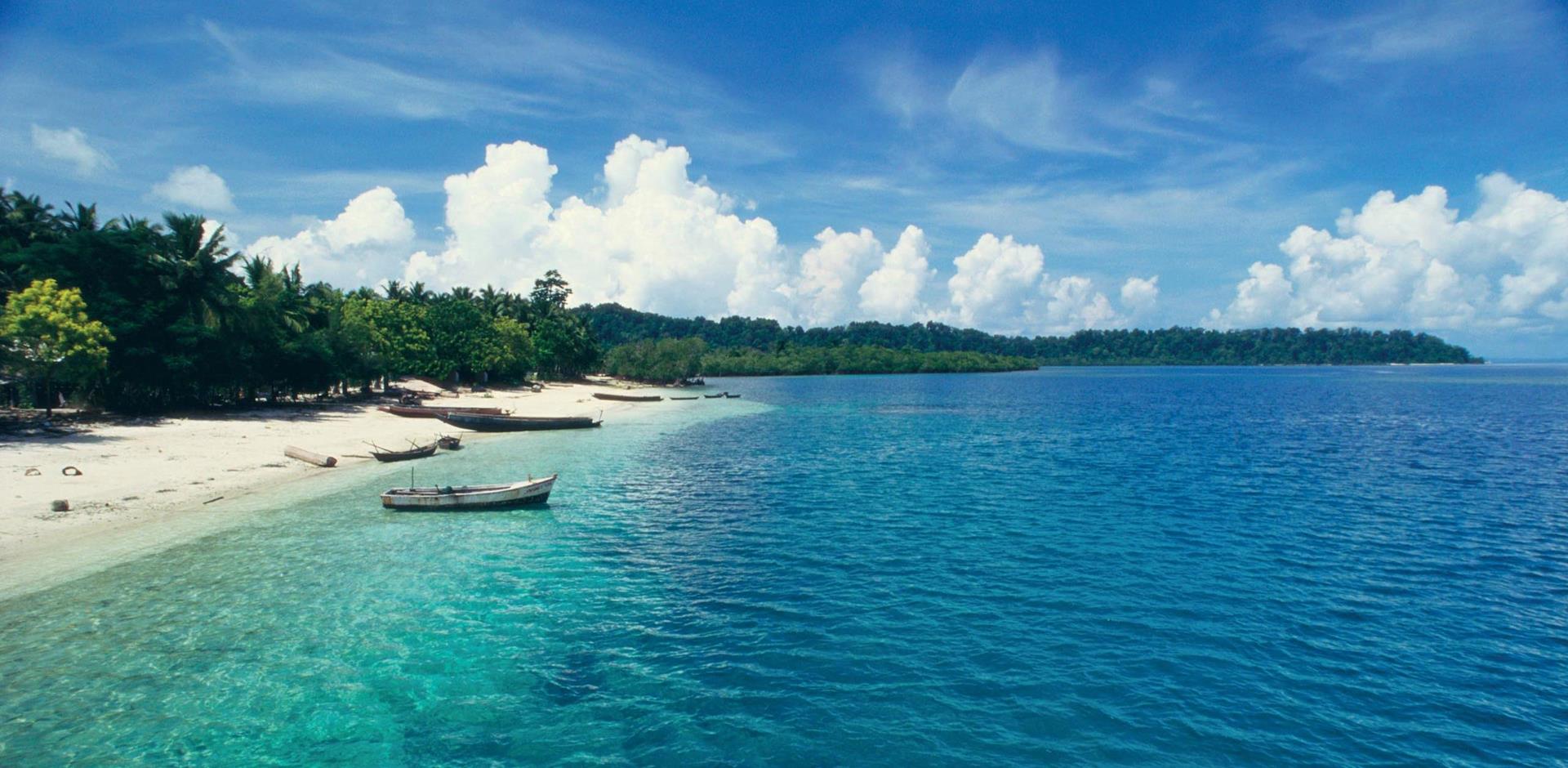
Discovering the Taj Exotica, the latest luxury island resort
Writer and photographer Chris Caldicott discovers why the Taj Exotica is worth the long journey to the Andaman archipelago.
I arrived at the brand-new Taj Exotica Resort and Spa on the Andaman Island of Havelock just in time for a sunset swim. I quickly changed travelling clothes for swimwear, shoes for flip flops, and headed straight for the ocean to wash away the travel fatigue.
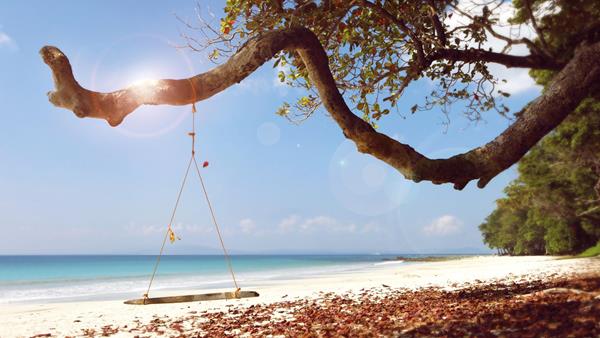
The sandy path that wound through coconut palms to the sea gave no hint of the hotel’s magical shoreline setting, until it delivered me onto the vast white arc of Radhanagar Beach. Wrapped around a lagoon of calm, clear water with a gently sloping, sandy seabed – it was nothing less than a vision of paradise. One that Time magazine recognised when they declared it the best beach in Asia.
Apart from a small group of tourists paddling in the middle distance, I had the beach to myself. I swam until the sun sank behind a bank of powder-pink clouds, sending shafts of orange into an otherwise cloudless sky. It felt so good to be here – I had finally realised a long-held dream of visiting this remote and exotic island outpost of India.
The 72 luxury villas, three restaurants and Jiva Spa of the hotel are scattered among 19 hectares of lush groves, manicured lawns, Palmyra trees and vegetable gardens. They are so well hidden by the shoreline trees that no hint can be seen from the beach, not even of the Olympic-length infinity pool on the elevated terrace just behind it. The resort was constructed without felling a single tree, and the terrace is designed with gaps big enough to let giant mahua and mighty padauk trees puncture the decking and thrust skyward, giving it the feel of a contemporary, open-plan treehouse.
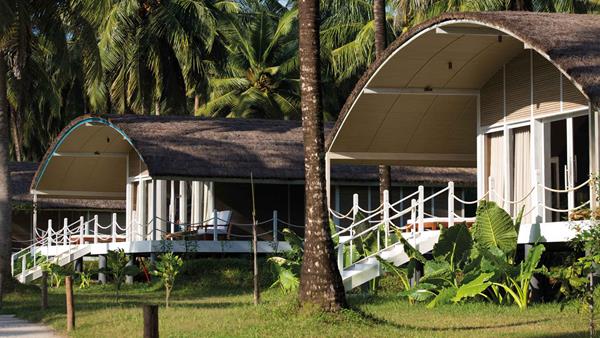
At night, the tree canopy is floodlit from below to frame the glittering stars above the Turtle House. This alfresco restaurant and bar serves global grills and Indian tandoor classics, such as perfectly cooked skewers of spiced lobster and paneer. My curry leaf martini came with an eco-friendly papaya stem straw, fitting in seamlessly with the hotel’s commitment to conservation and sustainable tourism.
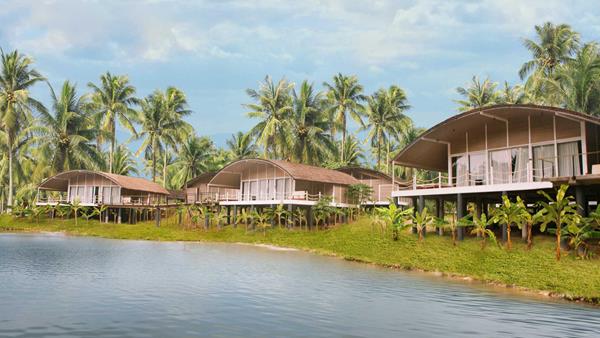
The archipelagos of the Andaman and Nicobar, just over 1,350 kilometres from the Indian mainland, stretch out over 640 kilometres of sea between Burma and Sumatra. They’re like nowhere else in India, particularly when it comes to serving up idyllic, tropical beaches.
Of the 572 islands, only 38 are populated and nine open to tourists. Most are shrouded in mystery, especially the Nicobar, which have been off limits to foreigners since the colonial era, when they were rumoured to be inhabited by ferocious tribes of cannibals. I was surprised to find out that Salomie, who had earlier shown me to my villa following her part in singing a traditional Nicobari welcome, is Nicobarese herself.
As we walked through dappled late-afternoon sunlight, she explained that despite their Austro-Asiatic origins, 98 per cent of Nicobarese are now Christian, and she had been recruited as part of an arrangement between Taj and her church. Later, Abush Kumar, the hotel’s charming general manager, said that it had been as much about “me being interviewed by the church elders as a suitable employer for their young people as the other way round”. Another Nicobarese staff member, named Martin Luther, has turned out to be a gifted musician who occasionally serenades guests after dinner with his guitar and a voice as smooth as tropical honey.
My spacious villa was built on stilts, with a domed thatched roof inspired by the architecture of traditional Jarawas tribal huts. The exterior was formed from reclaimed Palmyra wood with a wrap-around decked veranda. From here, wall-sized sliding glass doors led to a polished floor and coconut wood interior, with a king-sized four-poster bed, walk-in dressing room and a lavish bathroom suite. Some villas have two bedrooms and private pools, and the palatial two-storey presidential version comes with its own 20-metre infinity pool and a lift.
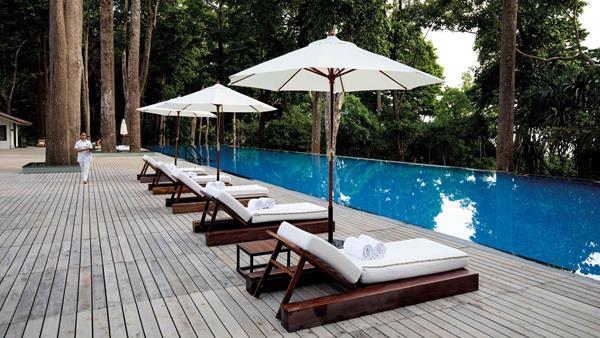
During my stay I catch-and-release fished for red snapper, wahoo, and grouper out at sea, canoed through turquoise bays to remote island beaches, snorkelled among coral canyons, and kayaked to a dark lagoon hidden between banks of mangroves, where every time I plunged my paddle beneath the water, I was treated to a sub-aquatic light-show of bioluminescence. On the way back, we stopped off at a lively night bazaar around the port where street stalls sold spicy pani puri snacks and steaming cups of hot, sweet chai.
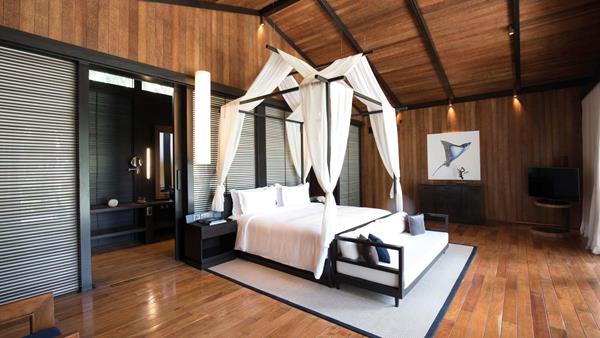
I also went on a jungle trek with resident naturalist Jocelyn Panjikaran, who had been so seduced by the island when she came on holiday seven years earlier that she abandoned her career in banking to stay. We walked among orchids and fungi under a dense canopy of ancient trees hung with lianas, and were invited by a giggling family of hill farmers to drink from freshly foraged coconuts.
I found it was on the culinary side of luxury that Taj Exotica really excelled. At the Shoreline restaurant, the menu celebrates the diverse flavours and spices of seafood cuisine from the Indian subcontinent and South-East Asia, with dishes like Sri Lankan mallung of spicy prawns and curry leaves in coconut milk, Thai massaman chicken curry, and Bengali mud crab masala.
Bengali-born executive chef Kaushik Misra’s pièce de résistance is Settlers. This exclusive ten-seater restaurant was inspired by the cuisine of settler communities from the Indian regions of Bengal, Tamil Nadu, Kerala, and Bihar, who migrated to the Andaman Islands and adapted their traditional recipes to include local ingredients. With his kitchen team he has travelled the length of the archipelago, collecting unique recipes for home-style dishes including steamed grouper fillet in banana leaf from a Keralan family cookbook in Diglipur, and an East Bengali version of maan kochu chingri (prawns and taro root with mustard and chilli) from Rangat.
Fortunately, the shoreline at Radhanagar stretches for so far, I was able to walk off some of the excess calories on dawn strolls when I did literally have the beach to myself. It is a perfect piece of paradise, and I’d have travelled twice as far to see it.
